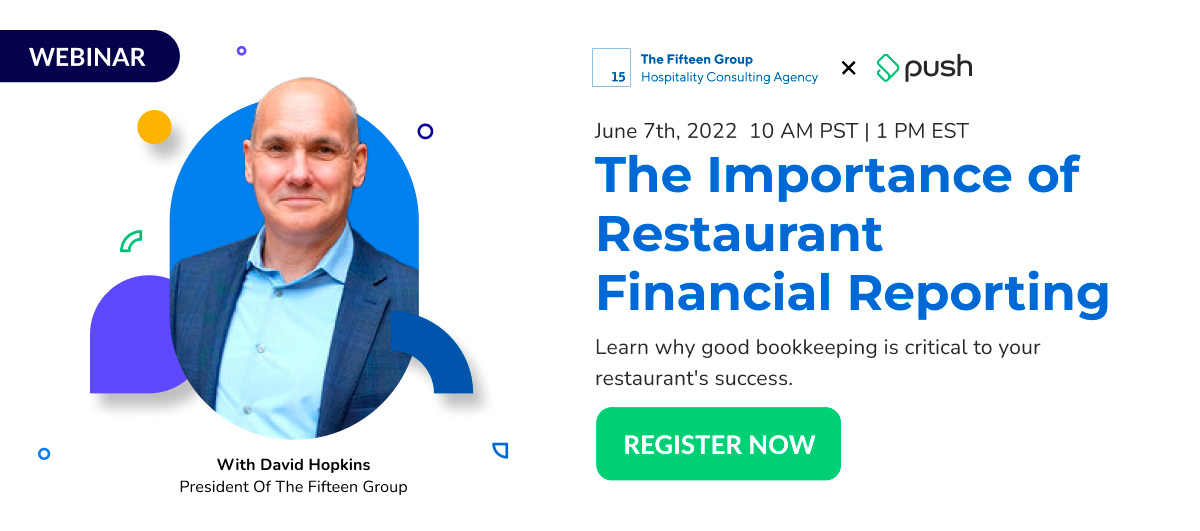5 Must Know Facts About Restaurant Reporting

Restaurant reporting is a slightly ambiguous but highly relevant term used commonly in today's restaurant industry. So what is restaurant reporting, how do we access the data, and why should we care?
What are restaurant reports?
In the restaurant industry, running reports refers to pulling data from different sources and comparing said data against each other for real-time insights. Ideally, using one platform or dashboard.
Restaurant reports are valuable information that allows you to look at your business collectively, without bias.
Running and viewing these reports help you optimize your savings and bottom line. Restaurant reports also help clarify where you previously may not have had it, and they could save your business.
Here are 5 must-know facts about restaurant reports, to help your business succeed.
1 - What does "running a report" even mean?
Running a report high level means that you are pulling information from somewhere within a software system and generating a report of how those numbers compare.
Typically this will be a one-time report; however, some software systems allow you to run reports hourly, tracking and measuring items in real-time, while others give the option for scheduled reports.
Learning about how to harness the power of reporting and understand what reports will work best for your business could save you time and money and give you a behind-the-scenes look at your company's health.
With an abundance of different reports at your fingertips, it's essential to understand what they tell you and how they differentiate!
2 - What are some different types of reports you can run?
Reports could tell you many different things about the health of your business, from labor costs to sales reports. Knowing what report is right for you and how to leverage that information can get you ahead.
Some systems allow you to pull different data from different parts of your system, depending on what you need to know.
Others allow you to set up alerts so that when certain thresholds are hit, you are automatically alerted and don't have to check in minute by minute.

Here are some popular report types that can help you understand your business.
Labour Cost and Sales Reports including:
- Total Detail: This report has everything, from total labour cost, Sales Summary, labour summaries (by department, cost center, and position), and employee summaries.
- Daily Summary: This report has the same details as above but the numbers are broken down daily. These reports are useful in comparing day to day operations. — you can choose any day.
- By Time Period: This report will compare time periods that are pre-set up. For example: you can compare lunch and dinner periods but you must have these time periods previously set up (in period labels).
- Employee Summary: This report is key in creating schedules. This is where you can see the hours and cost of each employee, broken down by their positions. This is also the exactly the same as the bottom part of the total detail report.
Labour Reports including:
- Labour Cost (Current Real-Time): This report is shows you daily sales summary reports by revenue centers, departments, and positions of the current day that the report is run. The data is the most up to date and it shows you details like labour budget, amount and the variance.
- Labour Hours Report: This report shows you how many hours have been worked, and it is organized by employee position. This is great for calculating tips, but please note this also takes into account off run hours. If you make an adjustment after a pay period, the hours will vary.
Clock Hours Reports including:
- Clock Hours Report – This report shows you all the records that your employees have clocked in and out. The report is alphabetically organized by employee Name, and it includes everything from their clock in/out comments, total hours, approved hours, positions, and department names between the date or date range you select.
- Report By Position: This report shows you all of the above, but it is sorted by an employee's position.
- Report By Time Period: This report displays the employee's name, positions, and clocked in/out times allocated to the period labels created. This report also shows the number of hours worked within the period labeled as a percentage. This report can also be shown by date or date ranges. Period Labels must be created from the Company Setup first before you can use this report.
- Clock Hours Department Summary Report: This report displays the hours summary based on Positions and Departments. This includes providing you the total labor based off the number of employees, regular, overtime, doubletime, and total hours. This report can be shown by date or date ranges. Period Labels must be created from the Company Setup first before you can use this report.
Department Summary Reports including:
- Department Summary Report: Usually, you would look at this after you look at your journal and view the report by pay run periods. When the reports are generated, they show you payroll summary break downs, as a whole or for the entire company, and by cost centers. They also summarize employee pay by cost center(s), and you can see how high or low cost centers are.
- Period Comparison: This report is the same as above, but you can compare two payroll runs. It gives you the difference between the two runs, in regards to hour and pay. It breaks it down by department and hours, and you can compare pay run dates.
The Profit Center Report :
- This report is used by locations that are POS integrated and display a detailed view of sales from your created Profit Centers. These include FOH and BOH sales, liquor, food sales, and other requested report codes. The report will display labour costs, however, it leaves out the labour costs that are not assigned to a Department.
The Audit Clock Approval Report :
- We highly recommend looking at this report before you run your payroll. It displays the employee worked hours and/or any discrepancies that require management overview such as missing salary, overtime hours and shifts that have not been approved.
- When granting permissions, you must click the report to give further permissions. These reports will be in blue text.

The Schedule Hour Report:
- This report is very similar to the Clock Hours report, however instead of displaying the clock in/out times, it displays the actual scheduled times. It displays the Scheduler as a report with a breakdown of Regular, Overtime, Doubletime hours and shift tag information as well as the total break time and comments left at time of clock in/out.
The Cost Center Report :
- This report displays your Cost Centers and the employees that have been assigned to them. It also displays the employees that have not been assigned to any Cost Centers. For more information on creating Cost Centers.
The Employee Information Report:
- This report displays a list of active and/or inactive employee information. It displays the employees first and last name, as well as the status of the employee and the status date. It also gives you the option to include selected additional employee information. (Example: SIN, phone, address, position, last day worked etc.)
The Statutory Holiday Report:
- When generated for the desired Statutory Holiday, this report will display a list of all active employees and their Statutory eligibility. It calculates the employee Statutory Holiday pay based off your provincial regulations and displays in detail how the Statutory Holiday was calculated by displaying each employee's Regular Hours and Gross pay total.
For the Payroll Summary Reports including:
- Payroll Summary: This report will display the pay period in which the chosen dates fall under, the total gross pay, as well as the total government remittances from both the employee and employer. It also provides the option to view these totals sorted by Cost Centers.
- Employee Payroll Summary: This report displays the same as the Payroll Summary report but in more detail. It displays all the employees individual gross pay details as well as Government remittance contributions within the chosen date range. This report provides the option to view these details per employee position or as a whole in employees unique.

3 - Why should you use reports?
Reports are valuable information that allows you to look at your business collectively, without bias. They help you avoid assumptions about your business and make sure money and time is being allocated to the correct places within your company.
Many clients find that by using Push's reporting features, they can save 3% on labor costs over several locations. Over the years, that can add up!
4 - How can reports help my business?
All in all, reports give you a better pulse on your business. Reports should be meaningful to you and your business. You should be able to make informed business decisions on the fly! Comparing sale and labor reports to real-time allows you to evaluate your business at face value.
Are you using your hours productively? Should you hire more staff? All these questions can be answered with an easily accessible report that'll show you your real-time sales vs your worked labor.
Comparing sale and labor reports to real-time allows you to evaluate your business at face value.
Aside from the obvious answers of saving money, managing your labor costs effectively, and giving you peace of mind, reports give you the right tools to make the right decisions and fast.
Reports like labor cost vs sales reports are great labor forecasting tools to allow you to be proactive rather than reactive. You can adjust the following days of your schedule before you overspend on labor.

5 -How do reports integrate with my other systems?
How do reports integrate with the other parts of your restaurant tech stack? We're glad you asked - that's the best part.
Reports integrate by pulling pertinent data from one platform, or by combining information to create a more clear picture.
When you integrate your software tools like payroll, workforce management, and your POS system, you get big-time insights that can help you run things more smoothly.
Restaurant scheduling software integration can help you streamline the process of managing labor by creating auto-generated scheduled forcasts thanks to reporting data pulled from your POS. It can also sync your POS system to gather sales data, run it against hourly labor costs, or pull in and measure other metrics for suggestions to optimize labor and costs.
Want to save time running restaurant payroll? If you use an integrated system there are no manual data transfers from your time attendance system to payroll platform - data is automatically streamlined and payroll is done.
Labor costs are one of the biggest costs of running a restaurant, and with a labor forecasting tool at your fingertips, you'll be able to see how much you're spending on labor and where and how you can save costs in real-time!
Want to save time and money while running your restaurant? Sign up for the free webinar!



